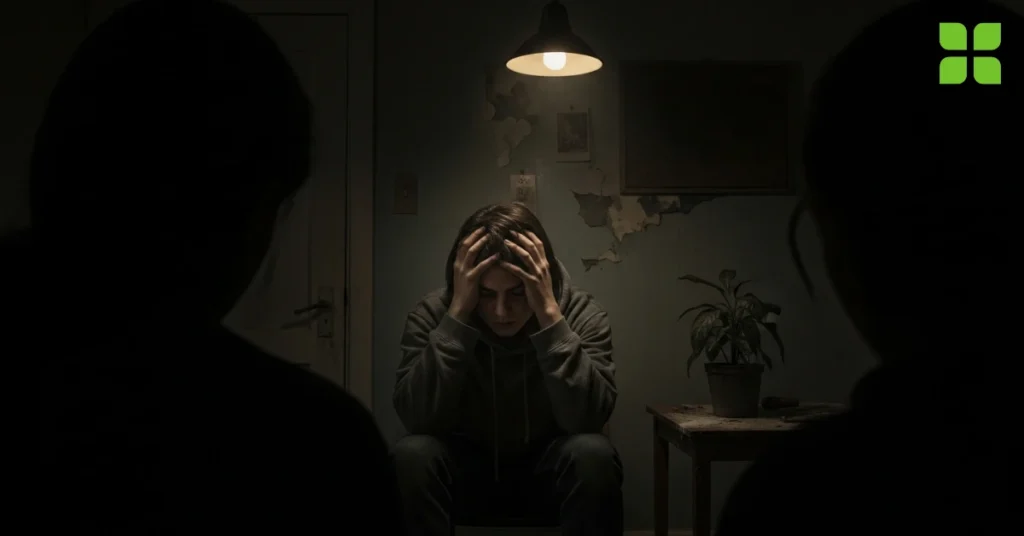The Art of Mending: Why Our Broken Pieces Are Our Greatest Strength

In our hyper-optimized world, we talk about mental health like it’s a piece of faulty software. We want to “hack” our brains, “fix” our anxiety, and find a “cure” for our sadness. We’re taught to strive for a state of seamless, unbroken wellness—a pristine, pre-packaged version of a happy life. But this pursuit of perfection misses the most profound and human truth about our minds: we are not meant to be flawless. Our true strength isn’t found in never breaking, but in the beautiful, intricate way we learn to mend.
There’s a Japanese art form called kintsugi, which means “golden joinery.” When a piece of pottery breaks, artisans don’t try to hide the cracks. Instead, they meticulously reassemble the fragments and fill the seams with a lacquer mixed with powdered gold. The philosophy is that the piece is more beautiful and valuable because it was broken. The cracks are not a source of shame; they are a celebrated part of the object’s history, a testament to its resilience.
Jump to….
This is, perhaps, the most powerful metaphor for the human experience of mental health.
We all have our fractures. They are the moments of gut-wrenching grief, the long shadows of depression, the paralyzing grip of anxiety, the silent echoes of trauma. Our first instinct, reinforced by society, is to hide these cracks. We glue ourselves back together with platitudes and denial, terrified that someone might see the seams. We present a version of ourselves that is smooth on the surface, even as we feel the stress of holding our fragile pieces in place.
But what if we treated ourselves with the reverence of a kintsugi master?
The first step in this art of mending is to gather the pieces. This is the terrifying, courageous work of acknowledging the break. It means sitting with the pain instead of running from it. It means admitting, “I am not okay. I am hurting. I am in pieces.” This isn’t an act of weakness; it is the most honest act of strength. You cannot mend what you refuse to see. You have to honor the fracture before you can begin to heal it.
The second step is applying the golden lacquer. This isn’t a quick fix. The gold is forged from the slow, deliberate work of healing. It’s the self-compassion that allows you to forgive yourself for not being perfect. It’s the vulnerability of sharing your story with a trusted friend or therapist, letting their empathy be the gentle light that illuminates the broken edges. It’s the hard-won understanding of your own triggers and patterns. It’s the grace you give yourself on the bad days and the quiet pride you feel on the good ones. Each moment of self-care, each difficult conversation, each tear shed in a safe space—these are the precious flecks of gold that will bind you together.
The result is not a return to who you were before. You will not be the same unbroken vessel. And that is the point. The finished piece is something entirely new—a person etched with a unique history, whose fractures glow with a newfound strength.
These golden seams become our superpowers. The experience of profound anxiety can cultivate a breathtaking capacity for empathy. The journey through depression can bestow a deep appreciation for the quiet, simple moments of joy. Surviving trauma can forge a resilience that is both fierce and gentle. Our broken pieces give us a perspective on life that those who have never been shattered cannot comprehend. Our scars become maps that can help guide others through their own darkness.
So let’s change the conversation around mental health. Let’s stop striving for an illusion of flawlessness. Your worth is not defined by an absence of cracks. Your worth is in your history, your resilience, your incredible capacity to mend.
Look at your own fractures not with shame, but with reverence. See them as proof that you have lived, that you have weathered storms, and that you have the strength to put yourself back together. Your story isn’t about how you broke. It’s about the beautiful, breathtaking way you are learning to shine a light through the cracks.










One thought on “The Art of Mending: Why Our Broken Pieces Are Our Greatest Strength”